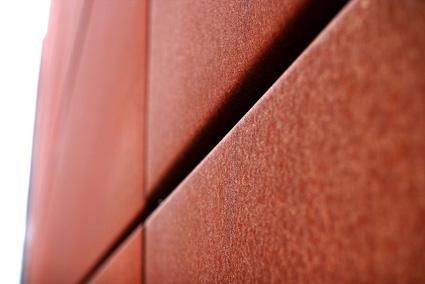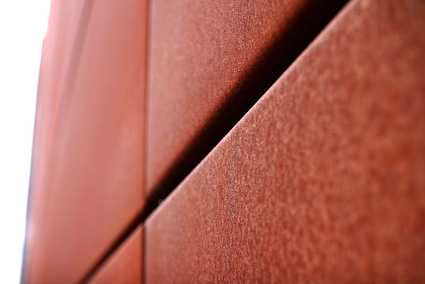In the last couple of weeks, it seems like every other conversation I have is in some way about Cor-Ten steel. That's probably because Cor-Ten is the stuff that a lot of great art is made of, from Richard Serra's monumental sculptures, including our own Band, to an architectural element Robert Irwin is designing for his expanding palm garden here at LACMA. But what exactly is Cor-Ten and why is it so popular with artists?
I did a little research and spoke with our Head of Objects Conservation, John Hirx, as well as John Bowsher, our Director of Special Installations, to learn more. Cor-Ten, Hirx told me, is a “weathering steel” that develops a rusty appearance when exposed to the elements but that overall exhibits more resistance to atmospheric corrosion than would a low-carbon steel. One reason artists appreciate the material is because, in addition to being highly durable, the surface of Cor-Ten matures and regenerates continuously when subjected to the influence of the elements, creating a nuanced patina that looks like “burnt cinnamon,” according to John Bowsher—or, as John Hirx said, over time surfaces appear “velvety, like a deer’s antlers.” The poetry continued to flow when I asked our director, Michael Govan, about the appeal of Cor-Ten. He noted that it blends easily with the natural environment and that, as well as having a rigid shape, its oxidized appearance is “leathery, velvety, and disarmingly seductive.” Wow. I think I just fell in love with weathering steel. Cor-Ten, not surprisingly, isn’t just an exquisite material favored by artists; it has industrial applications as well. The alloy was developed to be used in bridge construction so as to obviate the need for constantly repainting. It has also been used for the manufacture of railcars, bridges, shipping containers, and buildings. Tomorrow—a post on the conservation efforts on Ellsworth Kelly's Curve, which is made out of, you guessed it, Cor-Ten.




